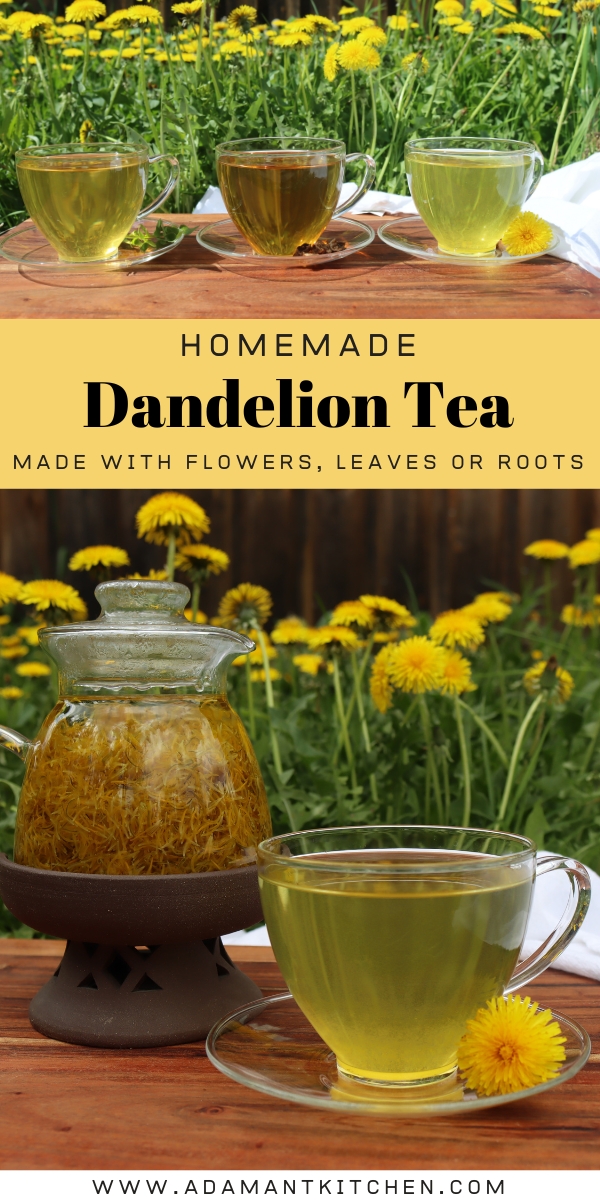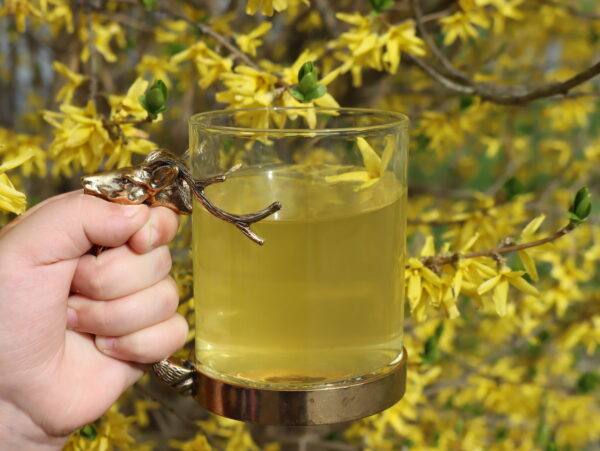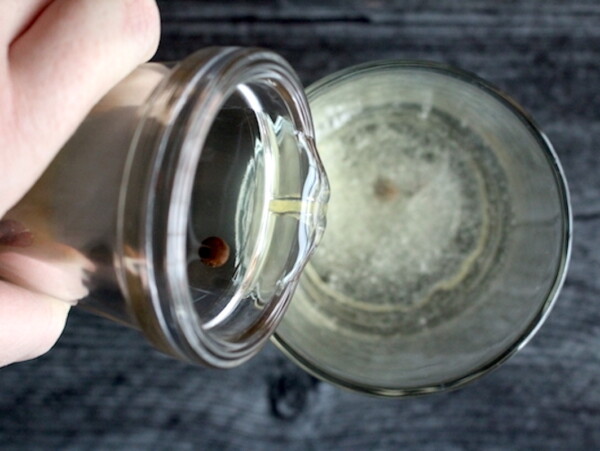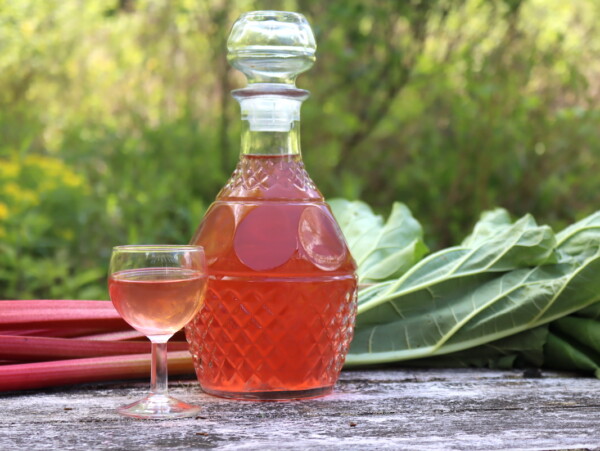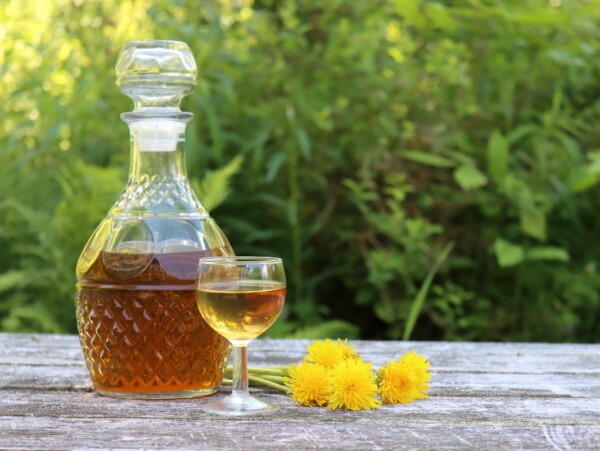This post may contain affiliate links. Please see our disclosure policy.
Dandelion tea is a simple way to enjoy fresh dandelions in season. Those “pesky weeds” are both edible and medicinal, and eating them is a fun way to connect with nature.
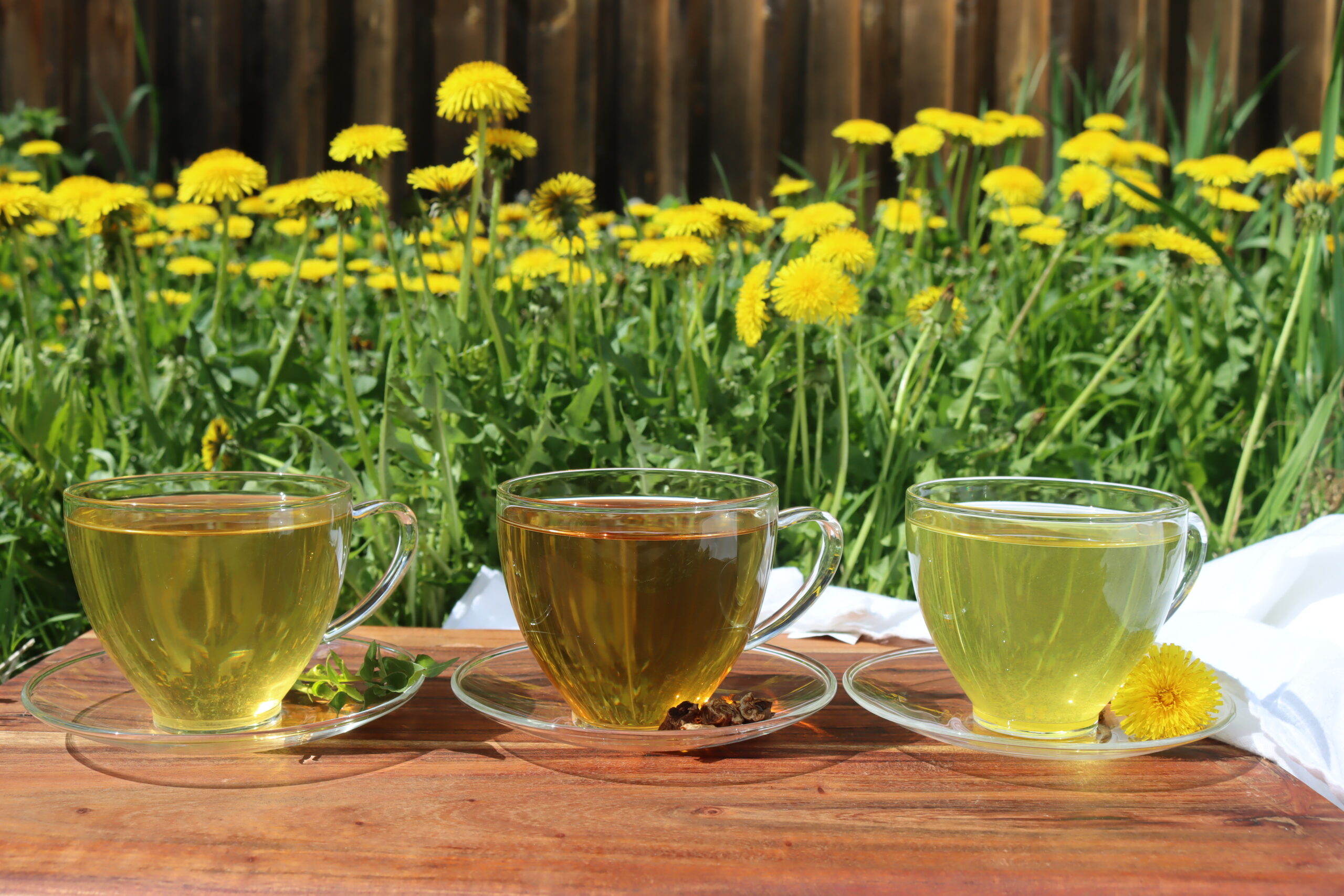
Dandelions are often seen as pesky weeds, but they’re actually packed with nutrients and have been used for centuries in herbal remedies. One of the best ways to enjoy the health benefits of this common plant is by making dandelion tea.
All parts of the plant are edible, and each part can be made into a unique tea.
Whether you prefer the mild, sweet taste of the flowers, the slightly bitter green leaves, or the earthy, coffee-like flavor of the roots, dandelion tea can be made from any part of the plant, or a combination of them.
It’s a versatile, caffeine-free drink that not only supports digestion and detoxification but also provides a host of vitamins and minerals.
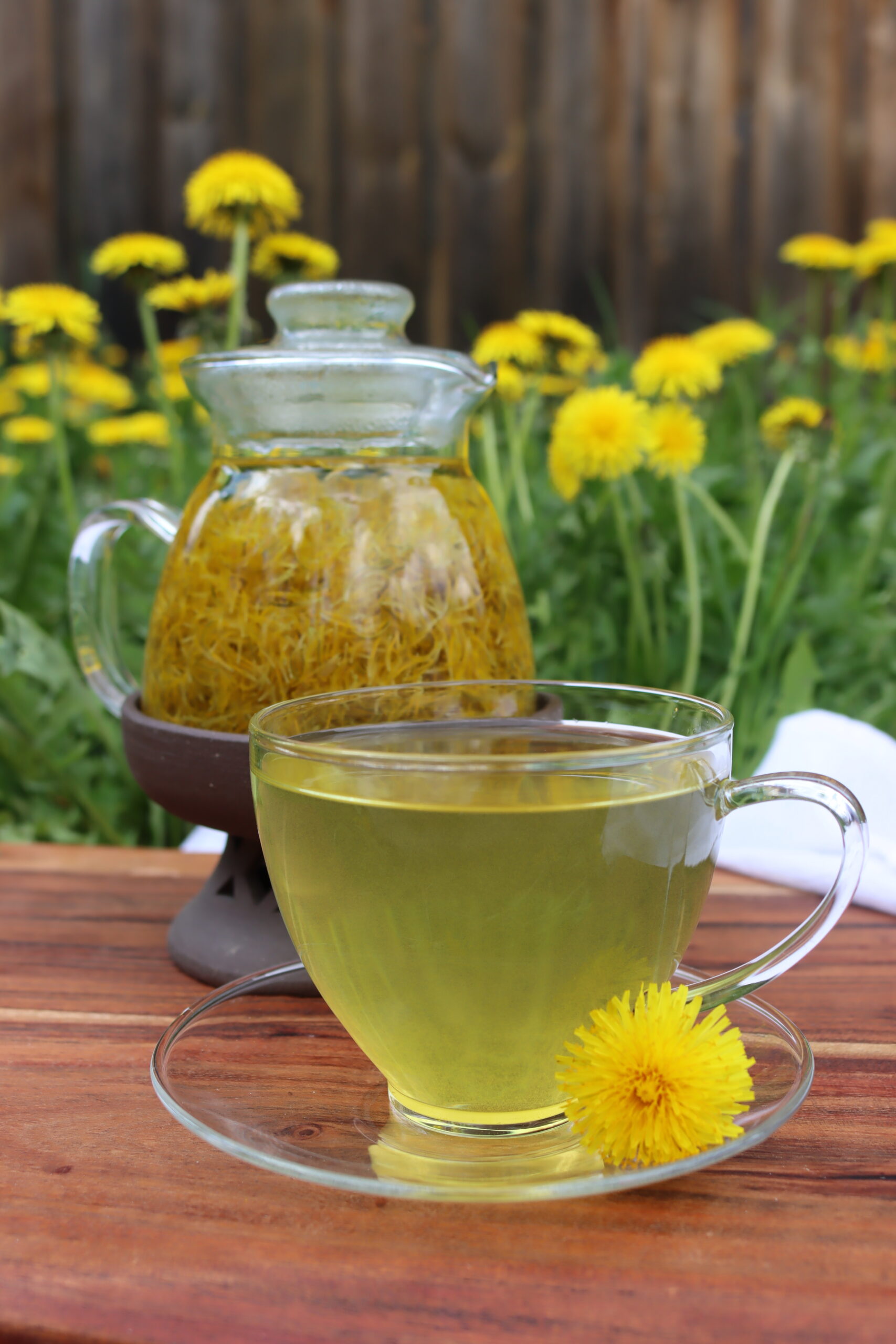
Benefits of Dandelion Tea
Dandelion tea, made from the leaves, flowers, or roots of the dandelion plant, is not only tasty but also offers many health benefits. It’s rich in vitamins A, C, and K, along with calcium and potassium. These nutrients make it a healthy addition to your daily routine.
Dandelion tea is well-known for its detoxifying properties. Its diuretic effect helps the body remove toxins and waste, supporting liver health. This can also improve digestion.
The tea contains compounds called polyphenols and taraxasterol. These compounds have antioxidant and anti-inflammatory effects. They help protect against cell damage and reduce inflammation. They may also help with high blood pressure and high cholesterol. Dandelion root tea, in particular, is great for liver health and may help clear up skin issues like acne.
Dandelion tea can also help regulate blood sugar and cholesterol levels. Studies suggest it may help those with type 2 diabetes by improving sugar metabolism. It can also lower triglycerides, which can benefit heart health. The potassium in the tea supports healthy blood pressure and reduces strain on blood vessels.
While dandelion tea is generally safe for most people, it’s best to start slow. Its diuretic effects can increase urination. If you take medications or have health conditions like kidney disease or gallstones, consult your doctor before drinking it regularly. Dandelion tea is a simple way to support detox and overall health.
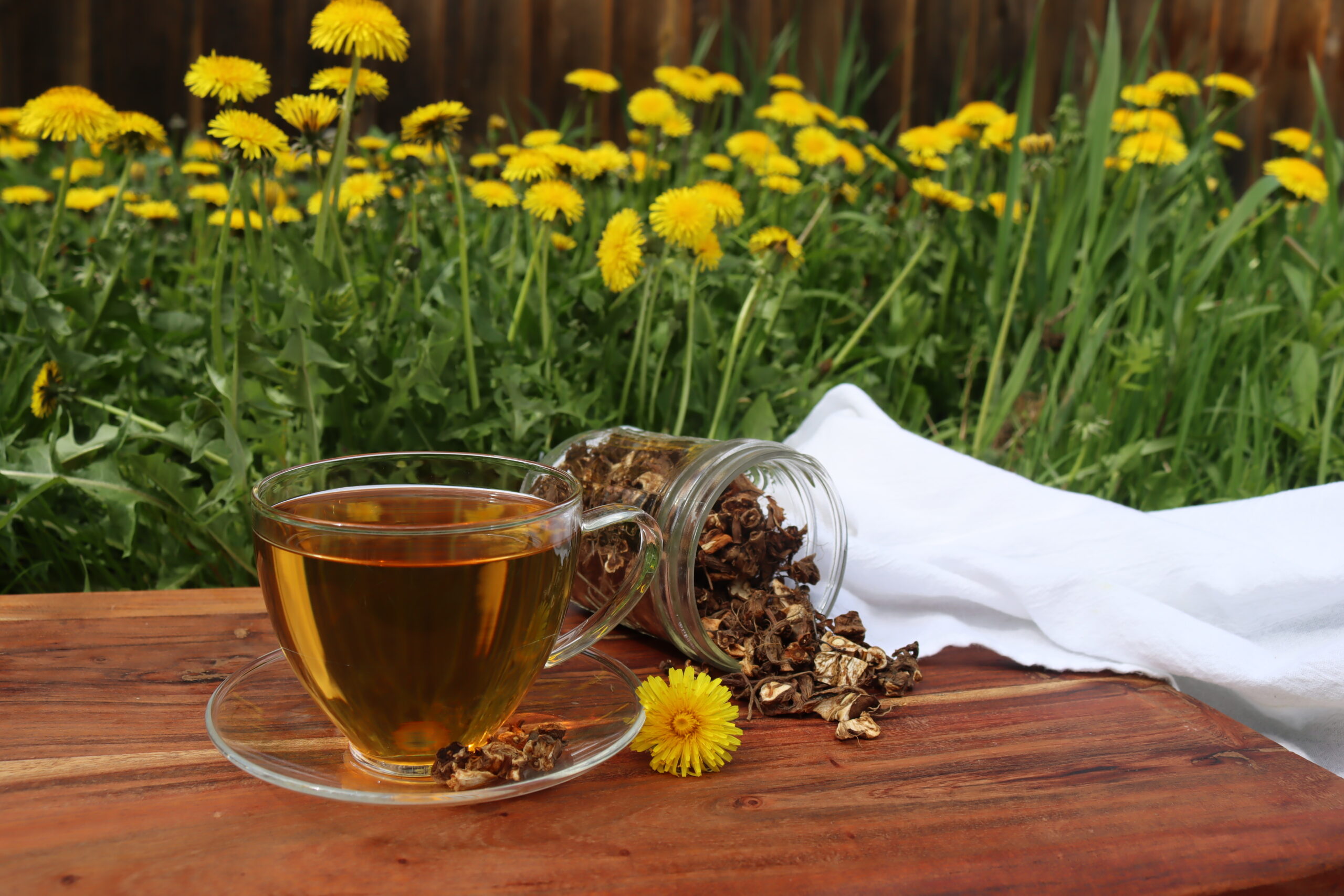
Making Dandelion Tea
Each part of the dandelion—leaves, flowers, and roots—offers a unique flavor and health benefit.
The leaves create a mild, slightly bitter tea with a warming green flavor. The flowers give a sweet, honey-like taste without any bitterness, making it a great choice for kids. Finally, the roots offer a rich, robust tea with earthy notes, similar to coffee but lighter in flavor.
We harvest a lot of fresh dandelion flowers to make delicious dandelion desserts each spring, and I’m particularly fond of dandelion petal tea.
No matter which part of the dandelion you choose, you’re in for a delicious, nourishing brew.
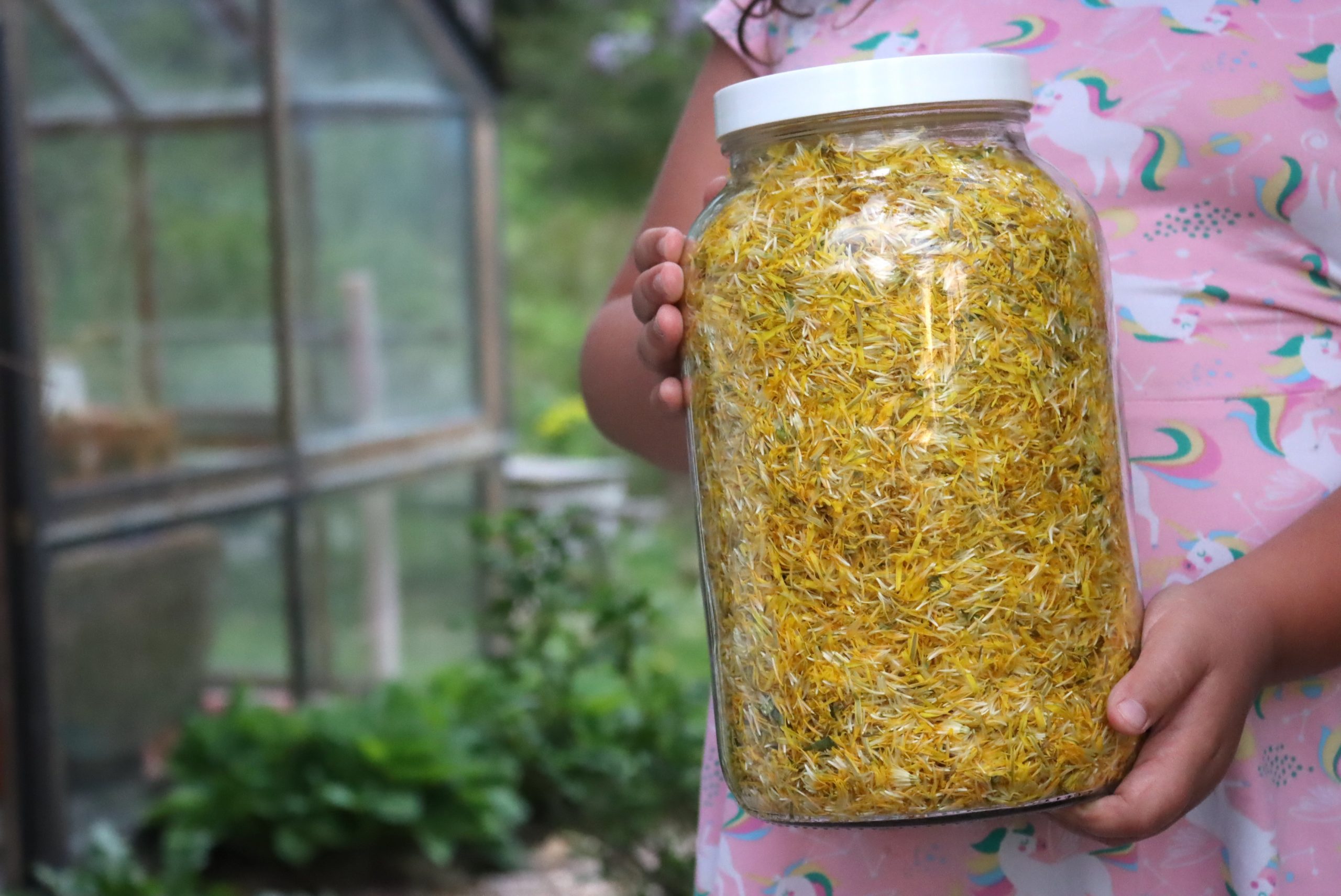
Dandelion Flower Tea
Dandelion flower tea is the sweetest of the bunch and incredibly kid-friendly. The flowers offer a delicate, honey-like flavor without any bitterness.
To make it, harvest about a cup or two of fresh dandelion flowers, being careful to pick them from a clean area free of pesticides.
Rinse the flowers gently to remove any dirt. At this point, you can infuse them whole as is, or gently pluck out the petals and discard the green sepals. The sepals have a touch of bitterness, and you’ll want to use just the petals themselves for the mildest tea.
Whichever you choose, the nex step is steeping the flowers or flower petals in hot water for 5 to 10 minutes. For an extra twist, add a little honey or lemon to enhance the natural sweetness.
This tea is light, floral, and subtly sweet—ideal for sipping hot or chilled. If you like, you can even refrigerate it overnight for a refreshing iced tea during the warmer months.
You can also turn dandelion flower tea into other delicious treats, like dandelion gummy bears, dandelion marshmallows, dandelion syrup or dandelion jelly.
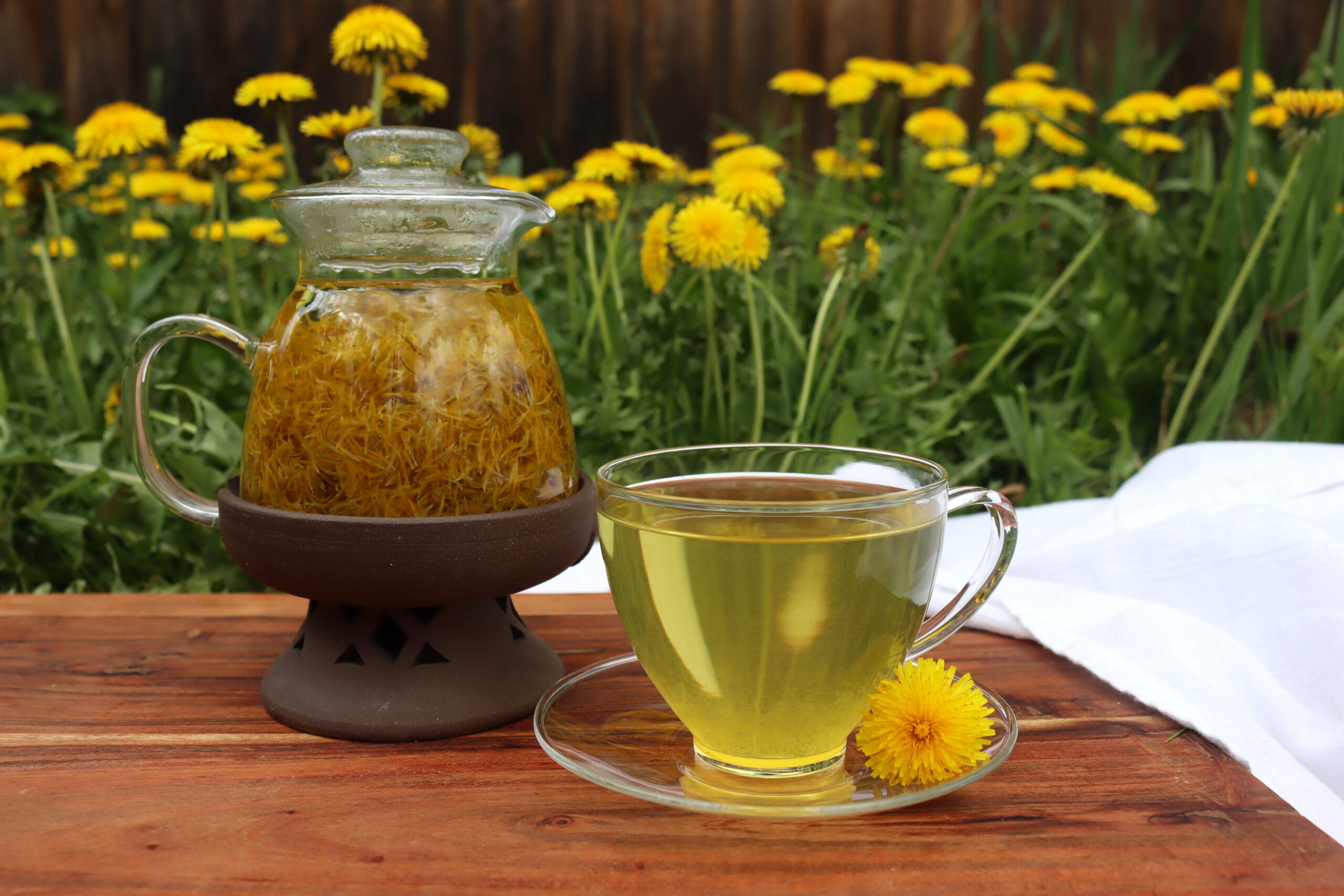
Dandelion Leaf Tea
Dandelion leaf tea is light, mild, and refreshing. It has a slightly bitter taste, similar to green tea, but with a richer, almost earthy note.
To make it, harvest a handful of young dandelion leaves, being sure to choose leaves that are not too tough or mature. Rinse them well to remove any dirt or insects, then chop or tear the leaves into smaller pieces.
Add them to a tea infuser or directly into a teapot, then pour hot water over them. Let the leaves steep for 5 to 10 minutes, depending on how strong you want the flavor to be.
The result is a gentle, green tea-like brew with a touch of mild bitterness, perfect for a calming afternoon drink.
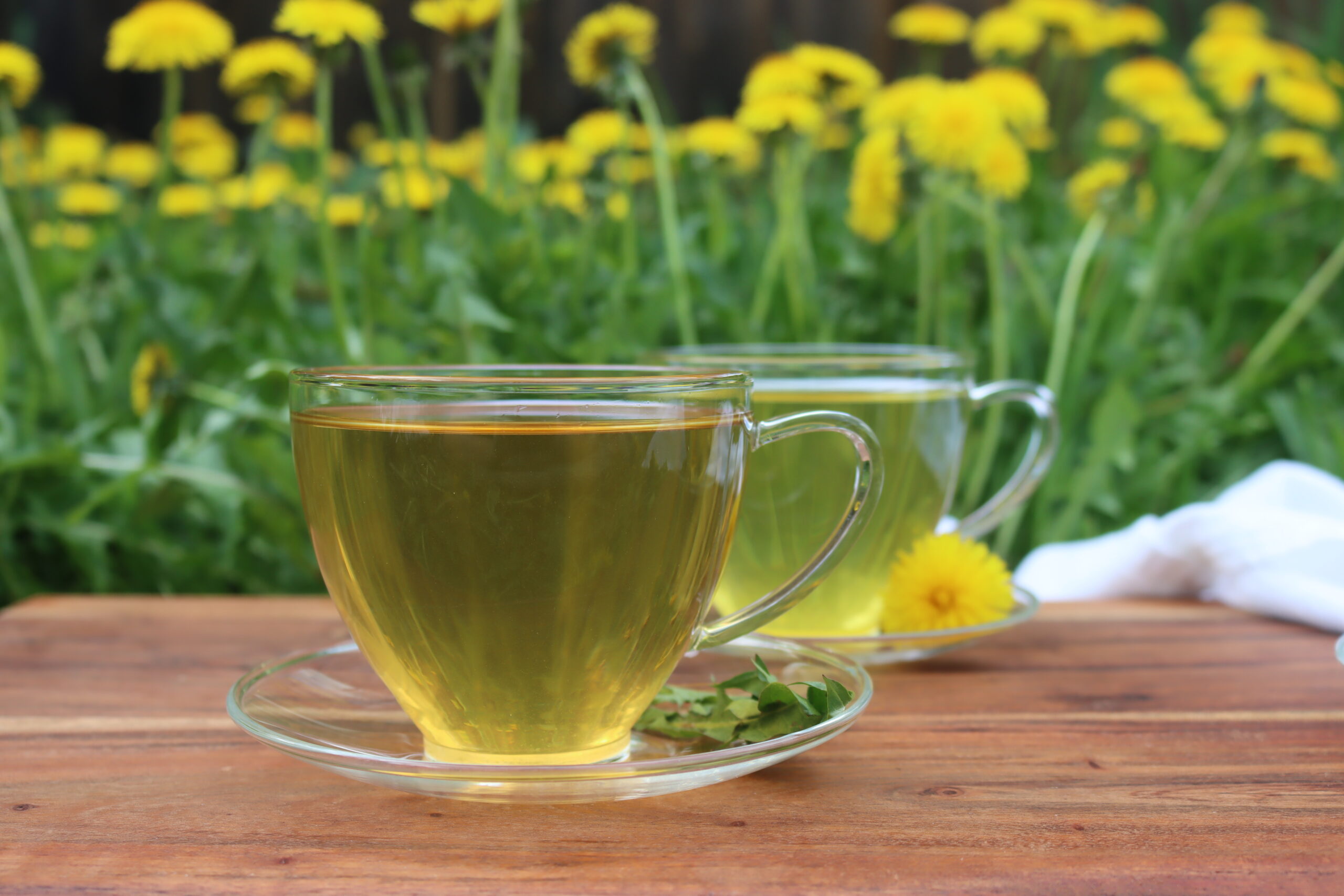
Dandelion Root Tea
A tea made with dandelion roots is the most robust of the three, with a flavor that’s somewhere between black tea and coffee. The roots have an earthy, slightly roasted flavor that deepens when brewed.
To make dandelion root tea, dig up a few mature dandelion plants, being sure to get the long, thick taproot. Wash the root thoroughly, then slice it into small pieces, similar to the size of coffee beans.
Roast the root pieces in the oven at 350°F for 10-15 minutes until they’re fragrant and lightly browned.
Once roasted, steep the roasted dandelion root pieces in boiling water for 5-10 minutes, then strain.
The resulting brew has a mild coffee-like taste, rich and smooth, but without the bitterness of actual coffee. It’s perfect for those looking for a warm, caffeine-free beverage with a bit more depth and substance.
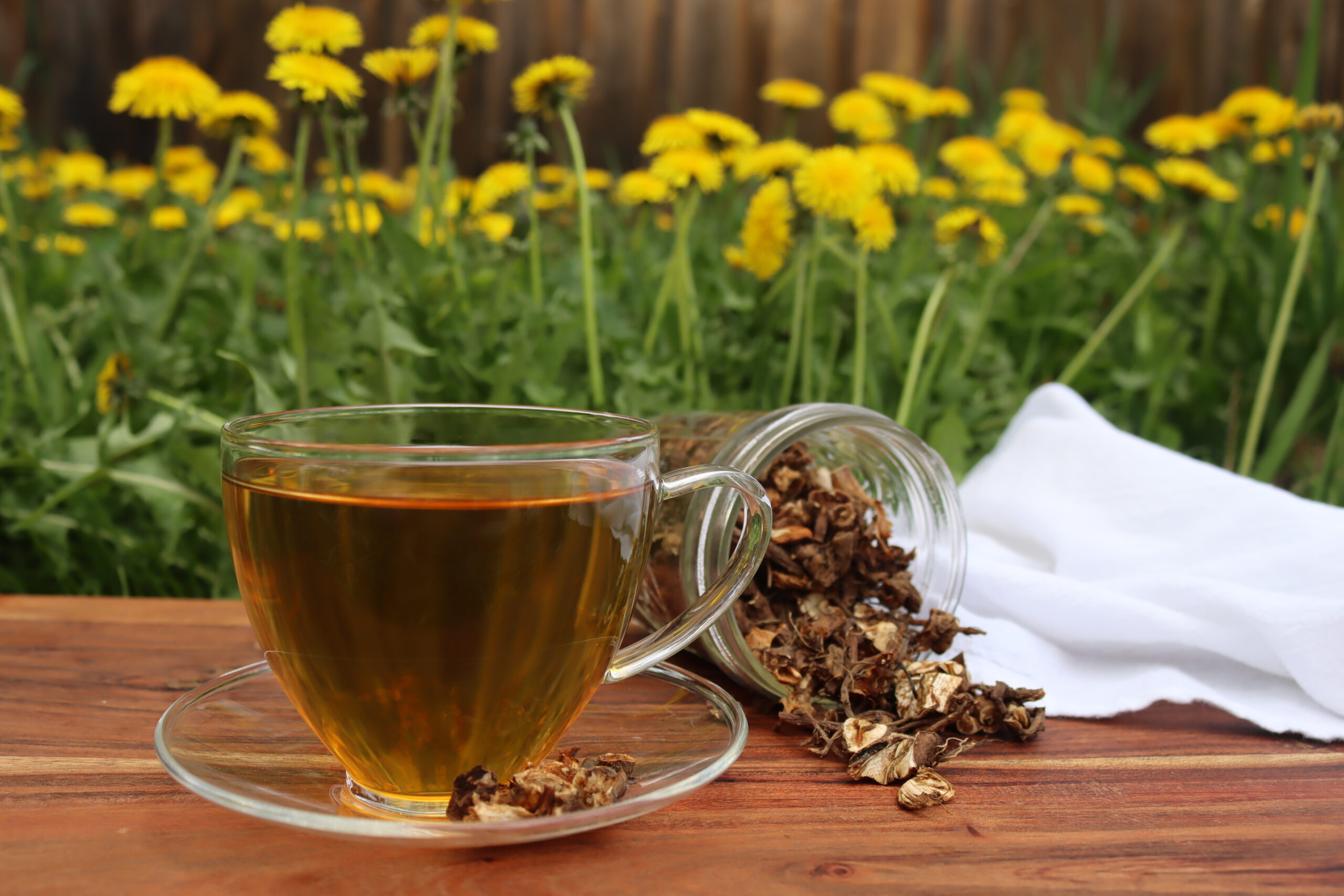
Dandelion tea is a wonderful way to enjoy this often-overlooked plant and its many health benefits. Whether you prefer the sweet, floral taste of the flowers, the mild bitterness of the leaves, or the earthy richness of the roots, each part of the dandelion offers a unique flavor and set of properties. Not only is dandelion tea a healthy addition to your routine, but it’s also an easy and enjoyable way to connect with nature.
By incorporating dandelion tea into your daily life, you can tap into its detoxifying, anti-inflammatory, and heart-healthy benefits. Plus, it’s a caffeine-free option that can be enjoyed hot or cold, making it perfect for any time of day.
So, whether you’re brewing a cup to support digestion or simply enjoying the taste, dandelion tea is a refreshing and nourishing drink that’s easy to make and packed with goodness.
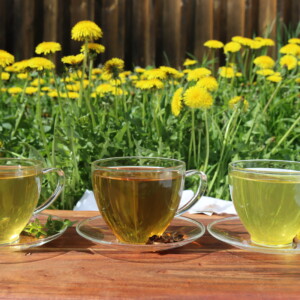
Dandelion Tea
Ingredients
Ingredients for Flower Tea:
- 1 cup fresh dandelion flowers
- 1 cup hot water
Ingredients for Leaf Tea:
- 1/2 cup fresh dandelion leaves, young and tender
- 1 cup hot water
Ingredients for Root Tea:
- 1 Tbsp Roasted Dandelion Root, from A few dandelion roots, cleaned, chopped and roasted
- 1 cup water
Instructions
For Leaf Tea:
- Rinse and chop dandelion leaves.
- Place leaves in a tea infuser or teapot, pour hot water over them.
- Steep for 5-10 minutes, strain, and enjoy.
For Flower Tea:
- Harvest and rinse dandelion flowers.
- For the sweetest tea, carefully pluck the yellow petals from the sepals and discard the green sepals. Or, just use whole flowers as is.
- Steep flowers in hot water for 5-10 minutes.
- Serve hot or chilled, with or without honey.
For Root Tea:
- Wash and chop dandelion roots, then roast them at 350°F for 30 to 45 minutes.
- Steep roasted roots in boiling water for 5-10 minutes, strain, and serve.
Notes
- Always harvest dandelions from areas free of pesticides and pollutants.
- If you have allergies to ragweed, avoid dandelion tea, as it may cause a reaction.
- You can combine leaves, flowers, and roots in one tea for a more complex flavor!
Nutrition
Nutrition information is automatically calculated, so should only be used as an approximation.
